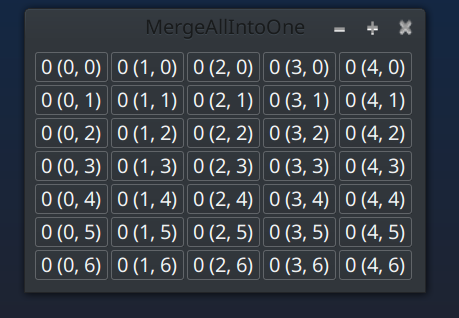Hi everyone
I implemented a wx GUI to build a grid to be the game’s board.
I have been trying to implement a game like this: https://play.google.com/store/apps/details?id=com.inspiredsquare.blocks.
My problem is that wx.GridSizer or wx.GridBagSizer don’t seem to actually
create a grid. Only the last added item seems visible.
Implementation is in createGrid(), lines 28-33:
- Using wx.GridSizer: https://github.com/71walceli/mergeAllIntoOne/blob/4412e7b30f3ab1056bd348f2bb4a1e9d00c2d162/WxGui.py
- Using wx.GridBagSizer: in the
fIXwXuIbranch
I sub classed wx.Button as to see how to trigger the game’s logic from the GUI. I would later replace it with some other colored control (window) such as those blocks shown in the game I am trying to implement.
This project has been stale like this for two months. I don’t seem to be able to figure it out and don’t know what else to do… I tested other examples, all of them worked as expediente.
Thanks for letting me be part of your community.
Regards



